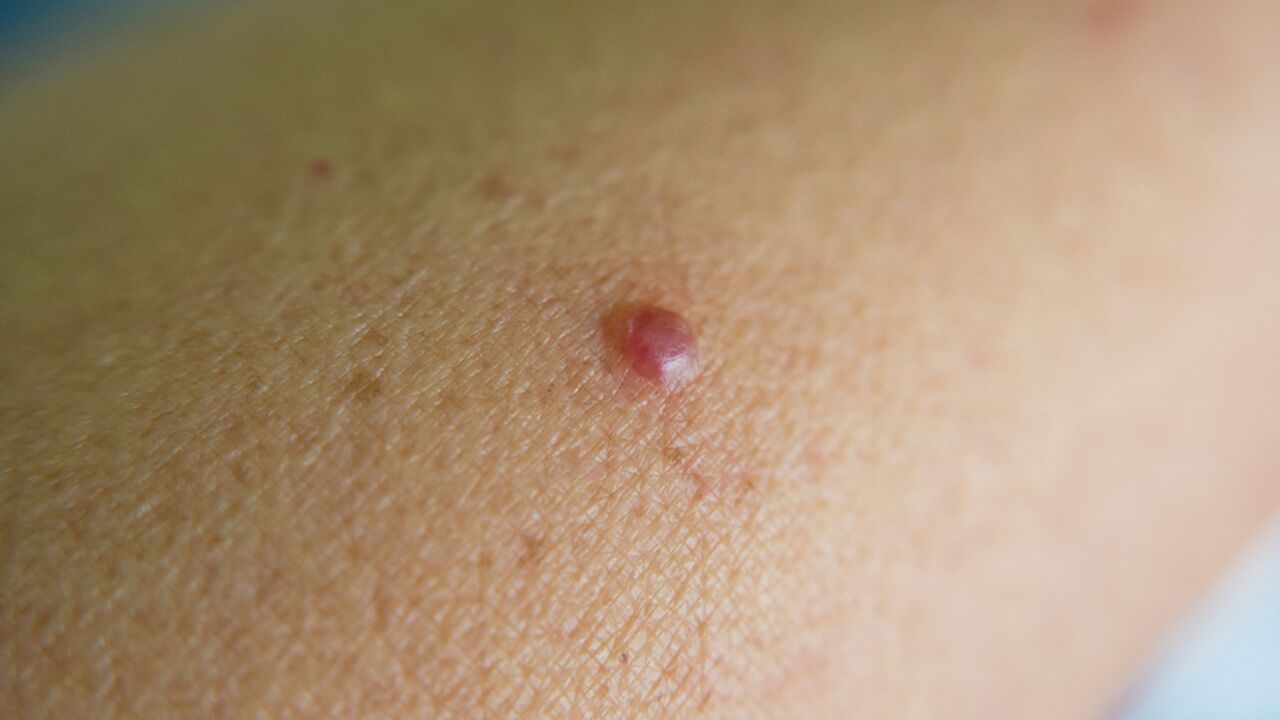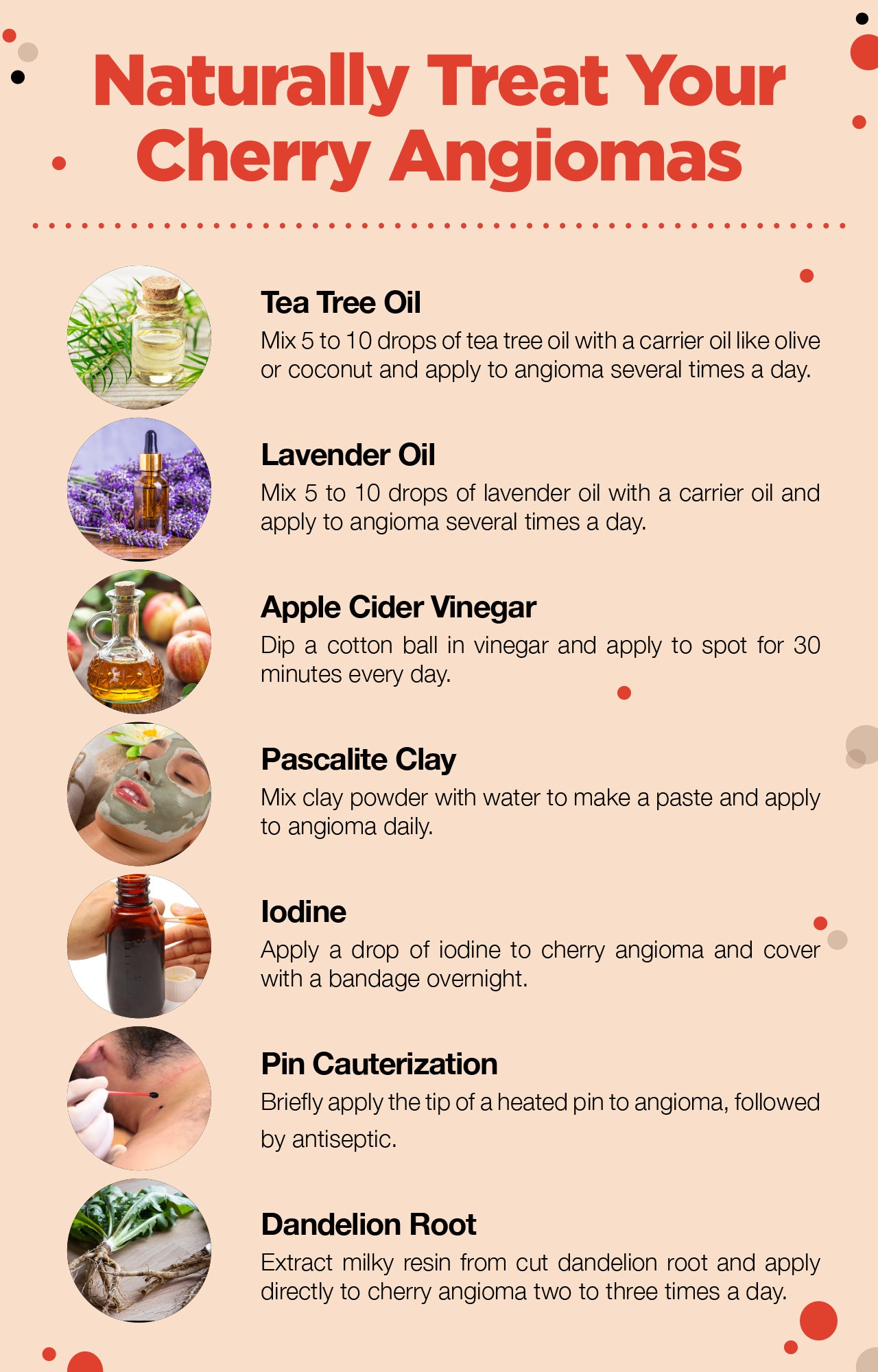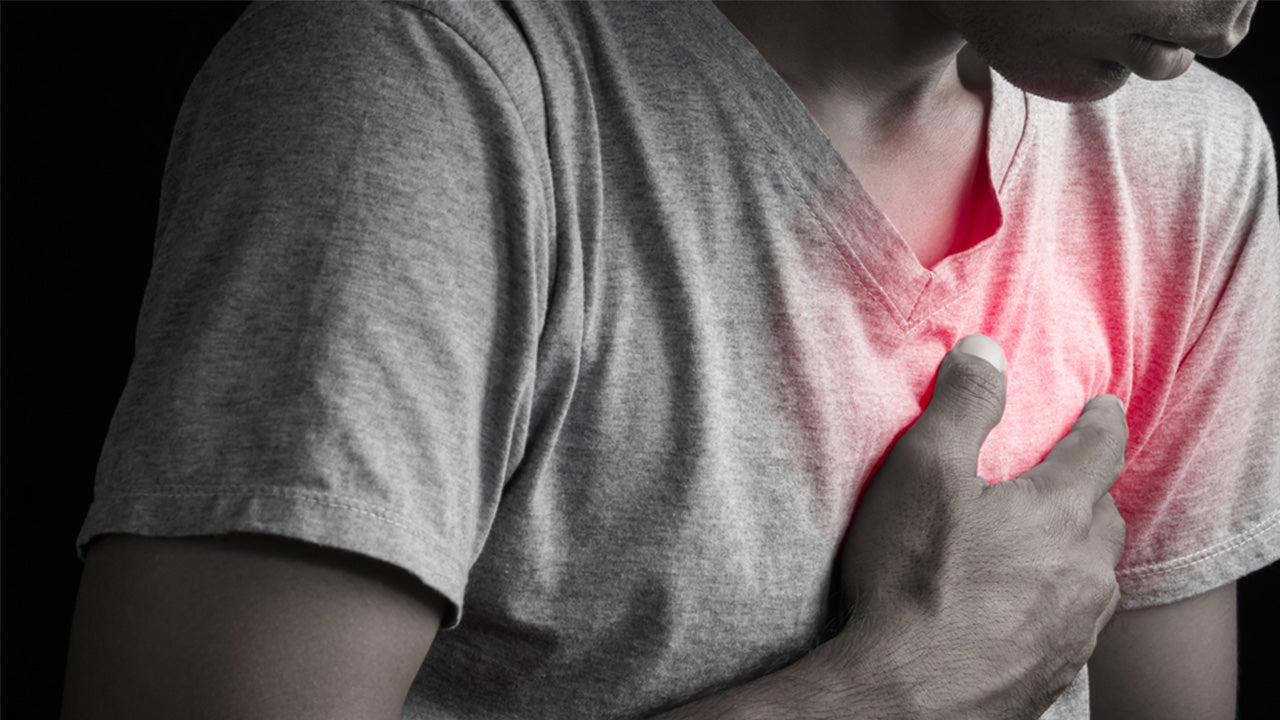Natural Remedies for Treating Cherry Angiomas
 By: by Amino Science
By: by Amino Science

If you’re an adult, chances are you’ve noticed the presence of one or two (or more) small red moles, or cherry angiomas, on your skin. The good news is that these red spots are little more than cosmetic irritations. But if you have them, you may be wondering how you can get rid of them. And while there are several conventional treatments available for treating cherry angiomas, many natural remedies are available as well. So if you’d prefer to take care of your cherry angiomas in the comfort of your own home, read on to discover seven natural methods that can help you reduce their appearance or even remove them completely.
What Are Cherry Angiomas?
Cherry angiomas, also known as senile angiomas or Campbell de Morgan spots, are benign lesions. So although their appearance may be alarming, they’re not associated with skin cancer. On the contrary, these small skin growths—which can range in size from a pinpoint to approximately a quarter inch—occur when the endothelial cells that line small blood vessels begin to proliferate.
While some cherry angiomas remain flat, others may form domes that rise above the surface of the skin, which is why they’re often called red moles. These cherry red spots are most common in people over the age of 30 and can appear almost anywhere on the body, though they’re most commonly seen on the trunk, arms, legs, and face.
What Causes Cherry Angiomas?
The exact cause of cherry angiomas isn’t known, but it’s thought that genes play a role since they often run in families. In addition, other factors that may increase your risk of developing cherry angiomas include:
- Older age
- Liver disease
- Estrogen dominance
- Elevated copper levels
- Bromide toxicity
- Vitamin C deficiency
7 Natural Remedies for Treating Cherry Angiomas
Because cherry angiomas are completely benign, they don’t require medical intervention. However, once an angioma develops, it won’t disappear without treatment. If you have a cherry angioma that you’d like removed for cosmetic reasons—or because the lesion is in an area that makes it more likely to bleed frequently—a dermatologist can remove it using various surgical procedures, including laser treatment, cauterization, cryotherapy, and shave excision.
But if you’re like many and don’t feel your angiomas quite warrant a medical procedure, we’d like to offer seven methods that may help you perform your own cherry angioma removal at home.

1. Tea Tree Oil
Tea tree oil is an essential oil that’s been revered for centuries due to its anti-inflammatory and antimicrobial properties—factors that make it an especially popular ingredient in many skin care products. Tea tree oil has also been touted for its ability to shrink cherry angiomas. To try this remedy, mix 5 to 10 drops of tea tree oil with a carrier oil like coconut or olive and apply to the angioma several times a day until gone.
2. Lavender Oil
Lavender oil is another essential oil that’s recommended as a natural remedy for cherry angiomas. Like tea tree oil, lavender oil can be mixed with a carrier oil (in the same ratio) and applied to the angioma several times a day until gone.
3. Apple Cider Vinegar
Apple cider vinegar is another great home remedy with a multitude of uses. To try this method for treating cherry angiomas, dip a cotton ball in the vinegar and apply it to the angioma for 10 to 30 minutes, using a Band-Aid or surgical tape to hold it in place. Repeat this process every day until the cherry angioma is gone.
4. Iodine
Iodine became associated with cherry angioma removal after studies found a link between bromide exposure and development of angiomas. Bromide is also known to block uptake of iodine in the thyroid, and thus increased iodine intake has been recommended as a preventative against cherry angiomas.
Likewise, the use of topical iodine has been touted as a natural remedy for treating cherry angiomas. To use this method, begin by surrounding the angioma with petroleum jelly or vegetable oil (to prevent staining), and then apply one drop of 5% iodine solution. Cover the area with a Band-Aid and leave on overnight. Repeat every day until the angioma begins to disappear.
5. Pascalite Clay
Discovered in Wyoming’s Big Horn Mountains in the 1930s, pascalite is a calcium bentonite clay that contains a variety of trace minerals. Like other clays, pascalite is also negatively charged and is thought to have the ability to attract and draw out positively charged toxins. This has made clay a popular ingredient in many products intended to treat acne, insect bites, and other skin conditions.
To use pascalite for treating cherry angiomas, simply mix the clay with enough water to form a paste, apply a small amount directly to the angioma, and let dry. This procedure can be repeated once a day until the angioma begins to shrink.
6. Pin Cauterization
Believe it or not, one of the most popular home remedies for cherry angiomas is pin cauterization. Like an electrocautery procedure performed in a physician’s office, this low-tech version uses heat to cauterize the blood vessels that form the angioma.
To try this method in your own home, simply heat a metal pin (held in a nonconductive material) and place it very briefly against the angioma, finishing with application of an antiseptic.
The cauterization process will generally result in an audible popping sound, followed by charcoaling of the tissue and retraction of the blood vessels. And if the cherry angioma is small, one treatment may be all it takes for the lesion to scab over and disappear.
7. Dandelion Root
Lawn care ads have trained many of us to think of dandelions as simply pesky yellow weeds that must be gotten rid of at all costs. But did you know that dandelions are incredibly nutritious herbs with a range of health benefits?
The resin found within the root of the plant has even been used to get rid of warts and is recommended for treating cherry angiomas as well.
To try this remedy yourself, gather some fresh dandelion, extract the resin, and apply it directly to your cherry angioma. Do this two or three times each day until the angioma begins to disappear.
Although cherry angiomas can be effectively treated at home, other, more serious types of lesions can also mimic their appearance.
For example, if you begin to develop small, bright red spots consisting of a centrally located, dilated blood vessel as well as radiating capillaries that resemble a spider’s legs or web, you should seek medical advice. These types of skin growths are known as spider angiomas, and while one or two may be considered normal, three or more can indicate the presence of liver disease.
Likewise, some types of skin cancer can present with a red color that may be mistaken for a cherry angioma. However, unlike cherry angiomas, these types of lesions can be fast growers. So keep an eye out for changes in size and shape and be sure to report any suspicious skin lesions to your health care provider. To support overall health, consider supplementing with essential amino acids.

Up to 25% off Amino
Shop NowTAGS: conditions natural cures
Join the Community
Comments (0)
Most Craveable Recipes




 833-264-6620
833-264-6620



















